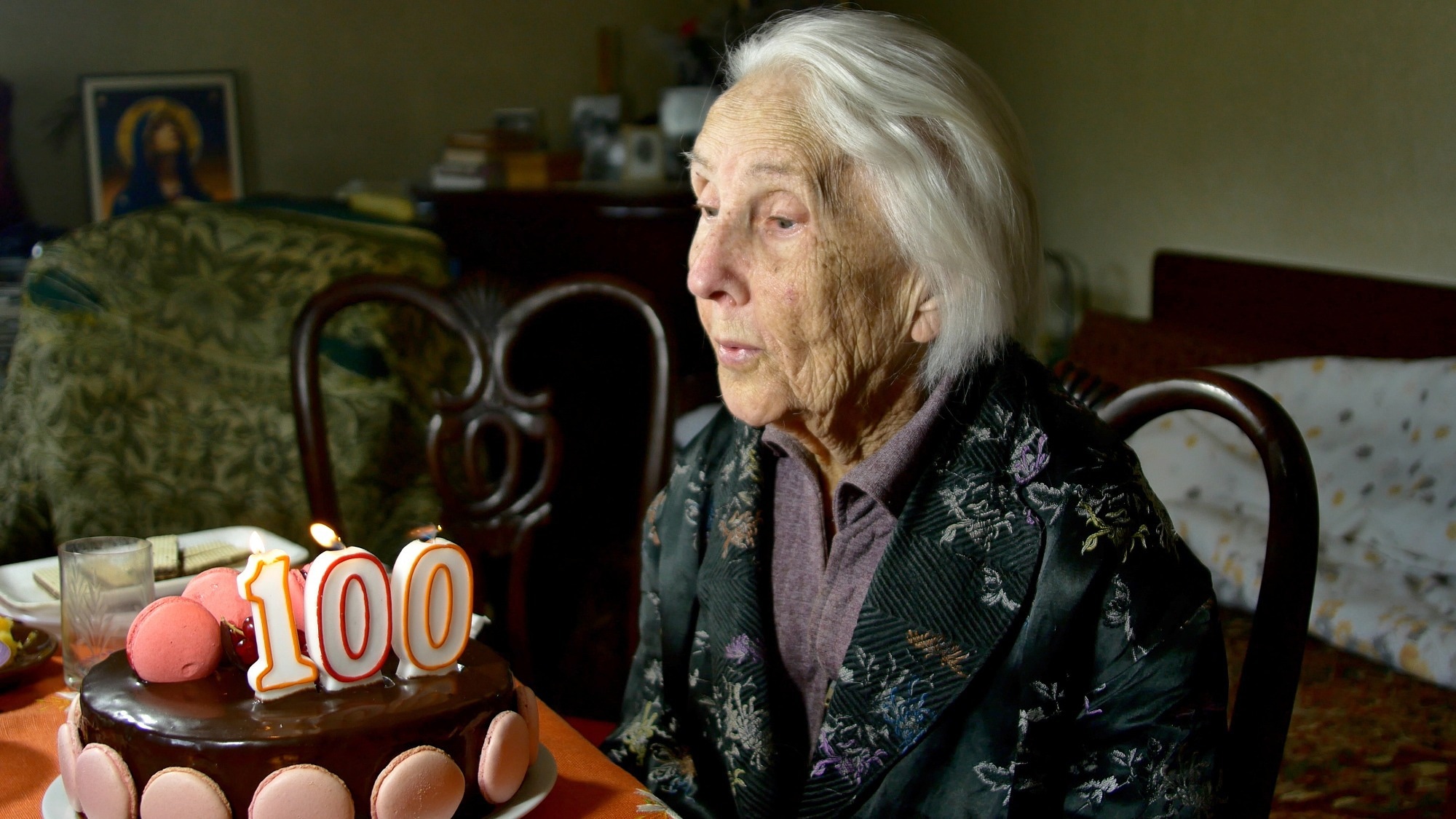A multi-omics atlas reveals how centenarians maintain potent cytotoxic NK and T cell circuits, offering clues to designing therapies that counteract immune decline with age.

Study: A comprehensive single-cell atlas of three centenarian cohorts unveils unique natural killer cell signatures and enhanced mutual interactions among peripheral immune cells. Image Credit: Dan Negureanu / Shutterstock
In a recent study published in the journal eBioMedicine, a group of researchers defined immune cell features linked to exceptional longevity by profiling peripheral blood in centenarians (CENs), their offspring (COs), and younger community controls (CTs).
Background
Not all 100-year-olds are frail; some carry immune systems that defy their age. Families feel it every winter: infections linger, vaccines offer less protection, and recovery takes weeks. These shifts reflect immunosenescence, an age-related remodeling of the immune system, and inflammaging, a low-grade inflammatory state associated with frailty and an increased risk of cancer. Yet some elders defy the trend, hinting at protective cellular programs in blood that preserve surveillance and repair. Identifying which cells, genes, and pathways confer resilience could guide the development of vaccines, adjuvants, and therapies that help people remain independent and healthy. Further research is needed to identify causal mechanisms and targets that can be effectively translated into real-world interventions.
About the Study
The investigators profiled peripheral blood mononuclear cells (PBMCs) from healthy CENs, their offspring (COs), and community controls (CTs) across three cohorts in China and Japan. They combined single-cell ribonucleic acid sequencing (scRNA-seq) with mass cytometry by time-of-flight (CyTOF) and flow cytometry to validate cell identities and proteins. In Lingao (Hainan), blood underwent density-gradient isolation; eligible participants lacked infections, tumors, or life-threatening disease, and provided informed consent. Lingao included 17 CENs, 9 COs, and 14 CTs; public scRNA-seq datasets added Rugao and Japan, yielding a total of 31 CENs, 17 COs, and 26 CTs. Libraries were prepared on the 10× Genomics platform; gene counts, unique molecular identifiers, and mitochondrial fractions were filtered to exclude low-quality cells.
Datasets were harmonized, clustered, and visualized using uniform manifold approximation and projection (UMAP); major lineages were sub-clustered to resolve functional states. T cell receptor (TCR) libraries enabled the analysis of clonotypes. Differentially expressed genes (DEGs), pathway enrichment, and pseudotime trajectories were used to quantify function and differentiation. Cell-cell communication was inferred with ligand-receptor databases to examine major histocompatibility complex class I (MHC-I). CyTOF panels and intracellular staining were used to test cytotoxic proteins and transcription factors, including runt-related transcription factor 3 (RUNX3).
Study Results
Across cohorts, CENs showed a reshaped peripheral immune landscape. Compared with CTs, B cells and Cluster of Differentiation 4 (CD4)-positive T cells were less abundant, while natural killer (NK) cells were relatively enriched; the COs often displayed an intermediate pattern between CENs and CTs. Within total PBMCs, proliferating T/NK fractions were also higher in CENs, whereas mucosal-associated invariant T (MAIT) cells were lower. Notably, the reduction in MAIT cells was more pronounced in male centenarians. These shifts indicate an immune system that is leaner in helper phenotypes yet poised for cytotoxic defense. Gamma delta T lymphocytes (γδ T) cells also showed subset redistribution, including a decrease in naïve (IL7R+) and an increase in TRGC+ subsets—consistent with enhanced surveillance.
scRNA-seq resolved major lineages and functional subsets. In T lymphocytes, trajectories favored cytotoxic endpoints, with naïve pools contracted and effector programs expanded. In NK cells, the team observed "young" features, including subset distributions, earlier pseudotime positions, and membrane receptor patterns, associated with effective surveillance. RUNX3, a driver of cytotoxic differentiation, was elevated in NK and CD4+ T cells from CENs, aligning with stronger cytotoxic potential.
Communication analyses suggested that CEN immunity is not just about cell counts; it is also about better crosstalk. CEN NK cells exhibited enhanced interactions with T cell subsets through MHC-I-mediated antigen presentation, CD99-driven adhesion, and MIF cytokine pathways, thereby facilitating antigen recognition and lymphocyte activation. These connections likely help maintain T cell function despite age-related attrition of some compartments.
CyTOF and flow cytometry affirmed the single-cell findings. NK cells were more prevalent by protein-level gating, while CD4-positive T cells and B cells were less prevalent. Additionally, proliferating T/NK pools were increased in CENs. Flow-based intracellular assays revealed higher granzyme B expression in NK cells, while receptor profiling captured selective changes consistent with enhanced discrimination of self versus non-self through human leukocyte antigen (HLA) interfaces, such as increased HLA-E+ NK cells. Notably, while KLRC1 (encoding inhibitory receptor NKG2A) mRNA was elevated in CENs, flow cytometry revealed reduced NKG2A protein, highlighting post-transcriptional regulation.
Together, the multi-omics picture suggests a coordinated remodeling: fewer naïve and helper compartments, preserved or heightened cytotoxic arms, and stronger NK-T dialogues that may compensate for the classical signs of immunosenescence. Clinically, such adaptations could translate to better control of chronic infections and malignancy in extreme old age, without tipping into destructive inflammation. They also offer a template for therapies, vaccines, adjuvants, or cytokine-targeted strategies that aim to restore communication circuits and cytotoxic competency in typical aging.
Conclusions
This multi-omics atlas reveals that exceptional longevity is associated with an immune system that streamlines, rather than shuts down. CENs carry fewer B cells and CD4-positive T cells but maintain, or even enhance, NK activity and cytotoxic T potential. Equally important, NK-T cell conversations are strengthened through MHC-I, CD99, and MIF pathways.
These features suggest potential interventions: bolstering NK programs via RUNX3 modulation, sustaining effective T cell help, and restoring communication circuits. Applied to therapies or vaccines, such strategies could extend healthspan by improving infection control and cancer surveillance.
Journal reference:
- Wang, B., Zhang, Z., Ouyang, Q., Zhang, M., Duan, M., Hu, H., Zhang, Q., Jin, X., Zhang, J., Luo, Q., Sun, D., Li, H., Qu, Z., Chen, X., Gu, Z., & Chen, Y. A comprehensive single-cell atlas of three centenarian cohorts unveils unique natural killer cell signatures and enhanced mutual interactions among peripheral immune cells. eBioMedicine. 120. DOI: 10.1016/j.ebiom.2025.105922, https://www.thelancet.com/journals/ebiom/article/PIIS2352-3964(25)00366-4/fulltext